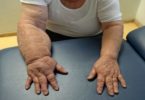What's in this article?
What is Precocious Puberty?
Puberty is the time during which a person’s sexual and physical characteristics mature. Precocious puberty is when these body changes happen earlier than normal.
Puberty, usually occurring during adolescence, is when kids develop physically and emotionally into young men and women. Usually, this starts to happen no earlier than about 7 to 8 years of age for girls and 9 years of age for boys (the average age is about 10 for girls and 11 for boys).
But what if a younger child for example, a 5-year-old girl begins showing the signs of puberty? How would it affect her?
Precocious puberty the onset of signs of puberty before age 7 or 8 in girls and age 9 in boys can be physically and emotionally difficult for kids and can sometimes be the sign of an underlying health problem.
There are two types of precocious puberty, central and peripheral.
- Central precocious puberty is the more common type. The process is identical to normal puberty, but happens early. The pituitary gland is prompted to produce hormones, called gonadotropins. These hormones in turn stimulate the testicles or ovaries to make other hormones, testosterone or estrogen. It’s these sex hormones that cause the changes of puberty, like breast development in girls.
- Peripheral precocious puberty or precocious pseudo-puberty is a different condition. It’s also rarer. The hormones estrogen and testosterone trigger the symptoms. But the brain and pituitary gland are not involved. It’s usually a local problem with the ovaries, testicles, adrenal gland, or a severely underactive thyroid gland.
Symptoms of Precocious Puberty
Precocious puberty signs and symptoms include development of the following before age 8 in girls and before age 9 in boys.
Signs and symptoms in girls include:
- Breast growth
- First period (menarche)
Signs and symptoms in boys include:
- Enlarged testicles and penis
- Facial hair (usually grows first on the upper lip)
- Deepening voice
Signs and symptoms that can occur in boys or girls include:
- Pubic or underarm hair
- Rapid growth
- Acne
- Adult body odor
Causes of Precocious Puberty
Puberty usually begins between ages 8 and 14 for girls and ages 9 and 16 for boys.
The exact age a child enters puberty depends on a number of factors, including family history, nutrition, and gender.
Often there is no clear cause for precocious puberty. Some cases are due to changes in the brain, genetic problems, or certain tumors that release hormones. These conditions include:
- Disorders of the testicles, ovaries, or adrenal glands
- Tumor of the hypothalamus (hypothalamic hamartoma)
- Tumors that release a hormone called hCG
Treatment for Precocious Puberty
If your doctor suspects that your child has precocious puberty, he or she may refer you to a pediatric endocrinologist (a doctor who specializes in growth and hormonal disorders in children) for further evaluation and treatment.
Once it’s diagnosed, the goal of treating precocious puberty is to halt or even reverse sexual development and stop the rapid growth and bone maturation that can eventually result in adult short stature.
Depending upon the cause, there are two possible approaches to treatment:
- treating the underlying cause or disease, such as a tumor
- lowering the high levels of sex hormones with medication to stop sexual development from progressing
- In some cases, treatment of an underlying health problem can stop the precocious puberty from progressing. But in most cases, because there’s no other disease triggering the condition, treatment usually consists of hormone therapy that stops sexual development.
The currently approved hormone treatment is with drugs called LHRH analogs synthetic hormones that block the body’s production of the sex hormones that are causing the early puberty. Dramatic results are usually seen within a year of starting treatment with an LHRH analog, which is generally safe and usually causes no side effects in kids.
In girls, breast size may decrease or at least there will be no further development. In boys, the penis and testicles may shrink back to the size expected for their age. Growth in height will also slow down to a rate expected for kids before puberty. A child’s behavior usually becomes more age appropriate as well.





